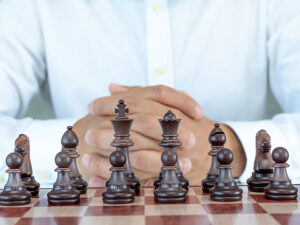IRS Issues Guidance for Manufacturers on New Semiconductor Tax Credit
Kirsch CPA Group
Apr 12, 2023

The IRS has released proposed regulations that provide guidance for manufacturers on the implementation of the Advanced Manufacturing Investment Credit. The credit, created by the Creating Helpful Incentives to Produce Semiconductors (CHIPS) Act, encourages manufacturers to invest in semiconductor manufacturing property. Among other things, the regs address the eligibility requirements and provide key definitions that clarify the credit.
The Credit in a Nutshell
The Advanced Manufacturing Investment Credit, codified as Section 48D of the Internal Revenue Code, is generally equal to 25% of an eligible taxpayer’s qualified investment in an advanced manufacturing facility. Specifically, the facility must have a primary purpose of manufacturing finished semiconductors or finished semiconductor manufacturing equipment.
A taxpayer’s qualified investment is its basis in any qualified property that’s 1) integral to the operation of the advanced manufacturing facility, and 2) placed in service during the tax year (after Dec. 31, 2022). The credit is effectively refundable, because taxpayers can opt to receive it as an elective payment, which will be treated as a payment against equal tax liability.
Eligible Taxpayers
An eligible taxpayer is one that 1) isn’t a “foreign entity of concern” (China, Russia, North Korea and Iran), and 2) hasn’t made an “applicable transaction” during the tax year. An applicable transaction is any significant transaction involving the material expansion of semiconductor manufacturing capacity in any foreign entity of concern.
Under the regs, a significant transaction is:
- A transaction whose value is $100,000 or more, or
- A series of transactions in which the aggregate value is $100,000 or more.
Notably, the proposed regulations provide for a recapture of the Sec. 48D credit if a taxpayer engages in an applicable transaction with a foreign entity of concern within 10 years of placing in service the property that qualifies for the credit. The IRS can recapture the credit from the taxpayer that claimed it, as well as members of affiliated groups and partnerships and S corporations that have made a direct pay election.
Critical Definitions
According to the proposed regs, property is “integral” to the manufacturing of semiconductors or semiconductor manufacturing equipment if it’s used directly in the manufacturing operation and is essential to the completeness of the manufacturing operation. Materials, supplies or other inventory items that are transformed into a finished product aren’t considered integral.
The term “semiconductor” is narrowly defined as an integrated electronic device or system most commonly manufactured with materials such as silicon, using processes such as lithography, deposition and etching. This definition excludes various semiconductor components. It specifically includes analog and digital electronics; power electronics; and photonics for memory, processing, sensing, actuation and communications applications. Semiconductor manufacturing equipment is equipment integral to the making of semiconductors and subsystems that enable or are incorporated into the manufacturing equipment.
A research or storage facility can qualify as integral if used in connection with the manufacturing of semiconductors or semiconductor manufacturing equipment. But a research facility that doesn’t manufacture any type of semiconductors or semiconductor manufacturing equipment doesn’t qualify.
Qualified property also doesn’t include buildings or portions of buildings used for offices, administrative services or other services unrelated to manufacturing. The regs identify several functions (for example, human resources, sales, payroll, and accounting and legal services) that are unrelated to manufacturing. While the list includes “security services,” it excludes cybersecurity operations from that term.
The Primary Purpose Requirement
Under the regs, the determination of whether a facility’s primary purpose is manufacturing finished semiconductors or finished semiconductor equipment is made based on all the facts and circumstances. The regs list several relevant factors, including the facility’s design and the possession of permits or licenses needed to manufacture such products. Facilities that manufacture materials or chemicals that are supplied to an advanced manufacturing facility don’t meet the primary purpose requirement themselves.
An example in the regs concludes that the primary purpose requirement is satisfied where 75% of the property’s output is dedicated to semiconductor manufacture. The regs don’t explicitly include a so-called 75% test, though.
Stay Tuned
The areas discussed above represent just a sampling of the proposed regs, and the IRS requested comments on several areas, including the scope of the definition of a semiconductor. However, manufacturers can rely on the proposed regs if they follow them in their entirety and in a consistent manner. Contact Kirsch CPA Group if you have questions about the Advanced Manufacturing Investment Credit.
We can help you tackle business challenges like these – schedule an appointment today.
© Copyright 2023. All rights reserved.
More Resources

About The Author
Kirsch CPA Group is a full service CPA and business advisory firm helping businesses and organizations with accounting,…
Sign Up for Email Updates
Tags
Accounting & Financial News

Practical Examples of QSB Gain Exclusion Post-OBBBA
Qualified small business (QSB) stock offers valuable tax-saving opportunities, especially with the enhanced gain exclusion limits under…




